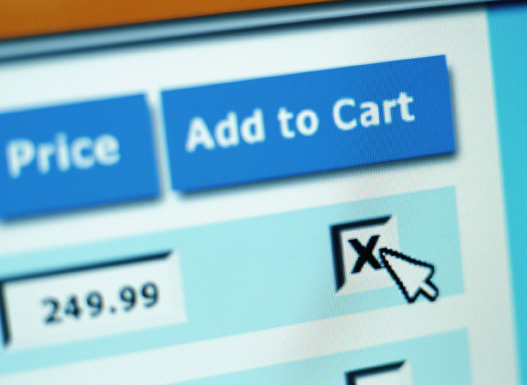Last updated on August 17th, 2021 at 08:18 pm
Discover how much money your website traffic is worth

“I have tried MANY different Facebook ads, I’ve tried eBay, I’ve tried google ads and I have testimonials from industry experts stating how great the product is, I have worked with Instagram and YouTube influencers. I have spent a lot of money and time pursuing pretty much every angle I can think of. I’m exausted.“
Ecommerce stores can get sucked into Facebook and other forms of advertising because of a seductively cheap cost per click (CPC) or by Google Ads because it’s well-known and easy to setup a campaign. But at times these cheap and easy traffic sources rarely get enough sales to justify the cost.
This is a common painful problem, but…
What if you knew every time you spent $10 to get traffic to your site, you made $12? I’ll bet you can find a few dollars for that. This is what the Amazons of the web know and it’s likely a real factor in how they grew from break-even to profitability.
When you know what a unique website visitor is worth to your business and the cost per unique website visit, then you know how much you should be spending to get that visitor to your website and what is too much to spend.
For example, let’s say your average sale brings in $100 profit, how many web visitors did it take to get that sale? Let’s say your average number of web visitors to get a sale is 100, so for every 100 unique visitors to your site, you get one sale.
Let’s review:
- Average sale is worth $100 profit (not revenue)
- Average traffic to get a sale is 100
So the average value of a unique website visitor in this case is $1.00.
In order to remain profitable, in this case, I would spend on average less than $1 to get a web visitor. Let’s say I can spend 95 cents on average to get a prospect to my site, I can do that all day long and make money! But as soon as my average cost to get a prospect to my site goes over $1, I lose money.
If I consistently spend less than $0.95 to make a dollar, the more I spend the more I’ll make. This is why you must know the value of a unique website visitor for your ecommerce store.
Every dollar you spend, you want it to come home with more dollars. Think of the analogy of going to war every day to defend your business and to grow it… because you’ve got a competitor some where… that wants to kick your butt. – Kevin O’Leary
One of the obvious benefits to knowing the value of a web visitor is in making decisions about traffic sources: PPC, SEO, Facebook ads, ad networks, email marketing, etc. It makes sense to analyze each traffic source for profitability, even down to specific keywords, ads and offers. When you know that value, you can better negotiate the cost with some advertisers.
Traffic source optimization means:
- Identify and acquire traffic sources that contain a large percentage of your ideal prospect.
- The ad or link that your ideal prospect sees must align with their goal so that they click through at a reasonable rate.
- When your ideal prospect lands on your page they think, “Yes, this is what I’m after.”
- An acceptable percentage of these ideal prospects go on to buy.

Optimizing your traffic sources is where most people start and end with this process and for some that alone is worth it, but there’s more.
If your goal is to make money when you spend to get prospects to your site, you’ll want to reduce the amount of traffic required to get a sale, also known as increasing the conversion rate.
In the example above the conversion rate is 1%, but imagine if I could double the number of sales from the same amount of traffic with a conversion rate of 2%.
There are plenty of tactics to double the ecommerce conversion rate like enhancing product images, revealing credibility, adding enticements to offers, A/B split testing, etc. But, for ecommerce stores the first step to doubling conversion rates is to fix the shopping cart abandonment problem.
I evaluate shopping carts and recommend specifics based on 134 guidelines to increase checkout conversion. Most ecommerce store checkouts go up by 35% after implementing the recommendations. Get your checkout process scored here.
In the example above I implemented some tactics and doubled the conversion rate to 2%, so, instead of needing 100 visitors to get a sale, I now only need 50 unique visitors. What does that do to the value of a web visitor? It bumps it up to $2! And that means I can get into more desirable, competitive traffic sources and still remain profitable!

How to calculate the value of a unique website visitor
Value of a web visitor = (Total Revenue – Cost of Goods Sold) / Total unique web visitors
If you aren’t yet making a profit, your goal is slightly different: to break even.
In this situation I would be thinking about what strategy to pursue to not only break-even but to become profitable.
If the value of a web visitor indicates that I spend on average less than $5 per click, I would consider traffic sources other than Google Ads:
- Microsoft Advertising – Bing’s search engine gets much less traffic than Google but the conversion rates from Bing tend to be higher and the CPC is much lower than Google’s.
- Implement SEO or get trained on how to do it yourself.
- Utilize couponing sites.
- Implement a content marketing strategy that emphasizes link earning (this post has earned links already).
- Create affiliates or a sales force by offering a commission structure.
- Do giveaways with influencers.
- Collect emails from those who did not buy and engage them later.
- Evaluate your industry leaders and competitors to see their traffic sources with a tool like SimilarWeb.
- Be alert for brand new CPC ad opportunities that cater to retail and online shopping to see if they pass the traffic source optimization test. These less known CPC ad opportunities usually start off low but as they become popular the CPC goes up higher and higher. (If you know of one, please share it in the comments.)
The value of a web visitor is impacted by many variables and will change from month to month, but if you begin tracking it regularly, you will likely figure out what to do and how to do it to turn things around.
So calculate it monthly and then use it to strategically guide you to break-even and on to profitability.
If you’d like to go further with the value of a web visitor and ecommerce marketing, you might try out these resources:

9 replies to "How To Drive Traffic To Your Ecommerce Site To Be Profitable"
Hi Tom,
Great breakdown here 🙂 Pay attention to your metrics. Understand the numbers which lead up to your sale. Number crunching can make your job so much easier.
Thanks for sharing!
I guess I have learned new skill in visitor calculation. The point made in this post may not be all that relevant for those starting out but companies like Amazon and others that have been established would find the calculation of leads and traffic vital for their marketing campaign.
Nevertheless, there is no harm in understanding what the worth of a site’s visitor is in terms of revenue generated. The real worth of a visitors lies in the difference between resources spend for generating leads and the return on investment.
I have shared this comment in kingged.com where this post was found.
Sunday – kingged.com contributor
Hey Tom, it’s good to be here on your blog today. 🙂 Compliments of the season!
Trust me you shared a very fantastic post and one that I truly resonated with and I’m glad that I could actually draw lesson from it.
This would really help me I’m sure in growing my blog.
Thanks for sharing with this great community! 😀
Sam
It may seem cumbersome to get accurate numbers to calculate your ROI and then the value of a web visitor, but it’s well worth it and then it’s easier to rinse and repeat every 90 days.
Hi Tom,
David Leonhardt (@amabaie) shared this with us over on Kingged, so I’ve copied my comment over here.
Many small (especially “micro”) business owners will balk at “doing the math.” In a small biz Skype group I participate in, there’s been discussion about understanding conversions. Clear explanations and easy to follow formulas like these make it easier to understand what to measure and how the numbers affect what we do (or don’t do).
Thanks Vernessa, great point, I’ll head over to kingged and check out the conversation.
Hey Tom,
This is really an interesting breakdown.
I think hitting more targeted campaigns will surely double the number of leads for the same amount of traffic and split testing landing pages will gradually lead to a better conversion.
Another point to double sales is adding more value to the product or service by offering irresistible bonuses 😉
Excellent thoughts bro
I particularly enjoyed the section on the quality and sources of traffic.
A lot of ecommerce store owners see traffic as a number, rather than real humans that are landing on their site. If you have interrupted them with an advertisement on Facebook, they might not just be in the mood to buy anything – no matter how good your photos are, how well your site is optimized, etc.
Where your traffic comes from matters enormously. We’ve noticed huge differences between Facebook and Google traffic, just as an example. You are interrupting the person on Facebook (usually) – whereas the person coming from Google is more likely to be looking to buy.
Thanks for the great write up!
Thanks Nigel, I totally agree with you and yes Facebook traffic is way overrated!
The value of a web visitor is also a good gauge of traffic quality and a KPI I track for my clients.
I track it monthly for all traffic but it can be tracked for each of the main traffic sources: direct, organic search, paid search, referral, social media, email, etc. It’s easy to spot the waste and the rewards that way.